Planning a novel can often feel a little daunting, or, as I always used to feel, like a massive pain in the arse and a waste of time. When I wrote A Heist too far and The Good, the Mad and the Undead, I wrote them start to finish, with only a few small pages of notes for each one. Although it worked well enough, and the story was there, I can’t help but feel that they would have been better if I’d have planned them more thoroughly and edited them better (more better? 😉 ).
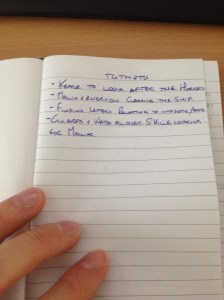
From the one above, I realised that I probably needed a bit more planning, especially when it came to writing A Game of Two Halves this year, when I just couldn’t mentally keep track of which team played who and when, injuries to players, twists and turns and all that caper. I initially tried writing Two Halves about four years ago, but faltered for this reason. Here’s the initial planning for the original effort:
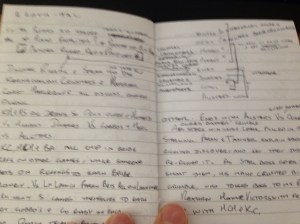
After powering on for years with little to no actual sit down and planning (four novels worth), I started the MA Creative writing programme, and realised how much planning some folk actually put into a novel. It was author Kate Long who gave a session on how she plans novels, and I thought her method was superb; an A4 book to plan it all out in, timelines, pages for characters, information on scenes, pictures of relevant things, you name it. I adopted a sort of Rob version of her methods (by Rob version, I mean it’s probably not as thorough…)
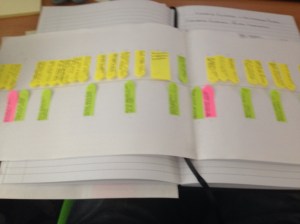
The timeline idea I nabbed from Kate works so much better than my old ‘few bullet points on a page of a notebook’ method, and using post-its and the like, I can shuffle them round as and when needed. It also allows me to see if the novel will be too much focussed on one character and such, if so, I can shuffle sections, or add new ones to break it up. Either way, it’s a handy to see exactly where you’re headed.
It’s then just a case of populating the book with information, I have a page per chapter, each with bullet points of where it starts and ends, and any things that I want to happen between those two points. Not so much ‘short discussion of fish prices, Paul isn’t interested in fish and changes the conversation to socks and their many uses’, but ‘needs to mention ingrowing beard hair and how Steve is a bastard to his pet finch’.
The first two pages I always have as character lists, just a line on each so I can keep tabs on them, then, from the back of the book, I use a page for each listing traits, looks, habits, age, clothes, speech styles, etc. After the first two pages, I usually leave about four blank, so I have space to add characters, information, equipment/important names of things (in the case of Slip Jevans, it looks like this:
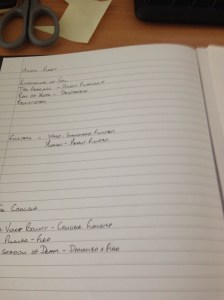
Also, it’s a good idea to research things that you want to use too, names of weapons/parts thereof, doors, buildings, anything that you might mention or use. For Two Halves, I spent parts of my holiday taking photos of historic things that helped when describing certain parts. Sadly it meant, that while some folk were taking photos of scenery and impressive buildings, I was taking pictures like this:
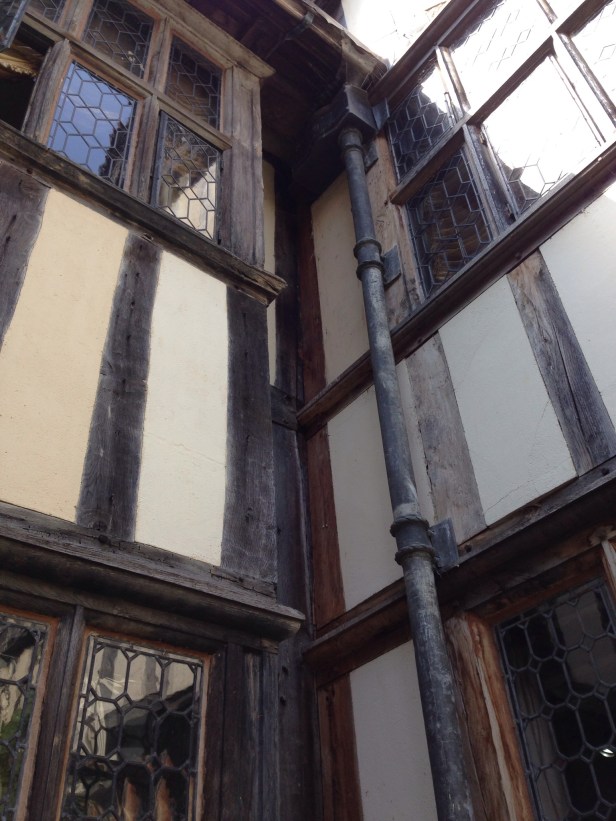
Suspect the drainpipe wasn’t original, but that wasn’t in the story anyway. Also, scale and scope wise, want a big ass castle in your story? Go and visit some, and if you’re not in a country that has castles, the internet is your friend. There’s heaps of information and pictures online, and you may even know a kind-hearted soul who’ll take some pictures for you. See how they’re set up, how cramped some parts are, the awesome little toilets, battlements, halls, etc. Hever Castle was ace, in so much as it was just a great fortified house (Ann Boleyn’s family home before Henry nabbed it). Warwick Castle (below) is bloody marvellous though (I also recommend Conwy and Caernarfon Castles, both of which are stunning, all different styles too).
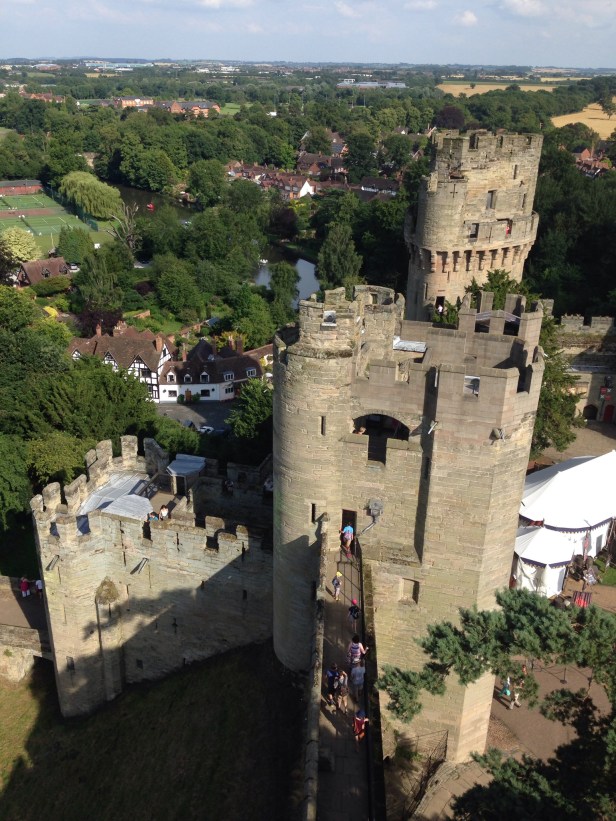
So researching your stuff can be a big help, also, there’s heaps of information to be found at most castles, giving a good insight to medieval life. I also like to grab shots of buildings I think look ace, and have a certain style to them (love the Tudor white and black houses… I LOVE them!).
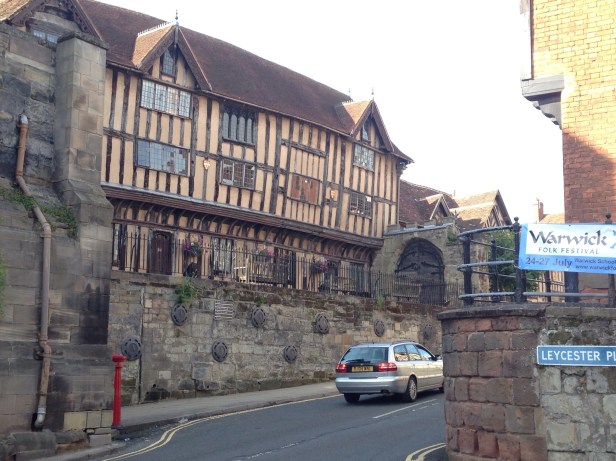
And:
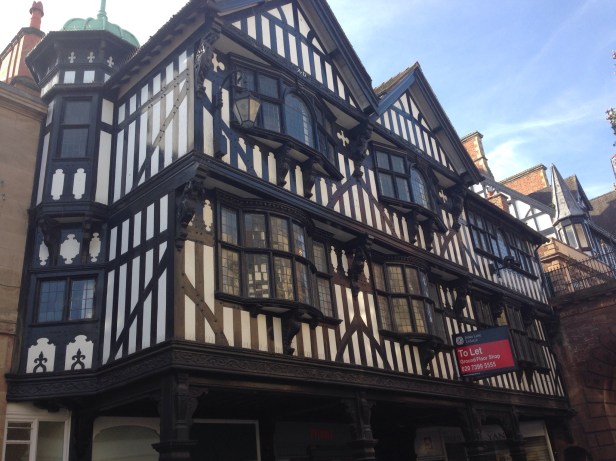
So that’s my basic planning. Obviously you can learn lots from seeing things, but reading novels set in a similar time, or history books, and even watching films all give me different things to think about and ideas to add. I don’t mean robbing plot elements, but aspects of life and times. 🙂
Anything you want to ask about how I plan, please feel free.

Excellent. Glad I was a help.
LikeLiked by 1 person
Very much so! 🙂 It means my house is now littered with A4 books and timelines though… 🙂
LikeLike
Great stuff Rob, you should have had a workshop at the Caldbeck Festival!! That was really helpful, thanks!!!
LikeLiked by 1 person
I’ll do one for next year if you want? 🙂 Any day will do, I’ll be there from start to finish! 🙂
LikeLiked by 1 person
Reblogged this on Ian P Loftus and commented:
Just got yourself a job at Caldbeck 2015 ‘Story Planning Workshop – RK’
LikeLiked by 1 person
I’ve found Gav’s sample synopsis quite useful for this kind of thing. https://mechanicalhamster.wordpress.com/sample-synopsis-angels-of-darkness/
I should probably do something similar for Objection. Could I take a look at your work for A Game of Two Halves at some point?
LikeLike
Yeah of course. You about this weekend? Can probably drop it off as I pass through town tomorrow if you want?
Will deliver it through your front window like the old Paperboy game. 😉
LikeLike